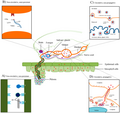
Size of this preview: 635 × 599 pixels. Other resolutions: 254 × 240 pixels | 509 × 480 pixels | 814 × 768 pixels | 1,085 × 1,024 pixels | 2,171 × 2,048 pixels | 3,190 × 3,010 pixels.
Original file (3,190 × 3,010 pixels, file size: 1.5 MB, MIME type: image/png)
File history
Click on a date/time to view the file as it appeared at that time.
| Date/Time | Thumbnail | Dimensions | User | Comment | |
|---|---|---|---|---|---|
| current | 11:04, 28 November 2020 |  | 3,190 × 3,010 (1.5 MB) | Guest2625 | Uploaded a work by Ralf G. Dietzgen, Krin S. Mann, and Karyn N. Johnson from Dietzgen, R.G.; Mann, K.S.; Johnson, K.N. Plant Virus–Insect Vector Interactions: Current and Potential Future Research Directions. Viruses 2016, 8, 303. https://www.mdpi.com/1999-4915/8/11/303/htm with UploadWizard |
File usage
The following pages on the English Wikipedia use this file (pages on other projects are not listed):
Global file usage
The following other wikis use this file:
- Usage on fr.wikipedia.org
